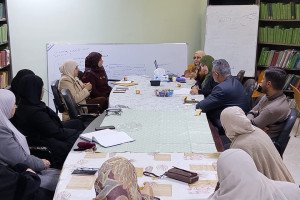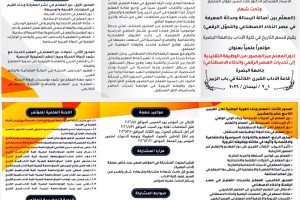
A doctoral thesis entitled “Environmental Assessment of the Water Quality of Aqueducts in Al-Hartha District” was discussed in the Department of Geography and Geographic Information Systems at the College of Arts at the University of Basrah.
The thesis presented by the researcher Farhan Daim Mazloum Al-Ghanami included four chapters. The first chapter discussed the theoretical and scientific basis, the second chapter discussed the evaluation of the main indicators of the water quality of the water channels, the third chapter dealt with the evaluation of the concentrations of metallic, alkaline and alkaline earth metals in the water channels, and the fourth chapter included an evaluation of the concentrations of transition metals, metalloids and non-metals in the water channels.
The thesis aims to:
1- Determine the most important channels and water bodies in the study area.
2 - Examination of the physical and chemical characteristics of the water quality in the studied channels and flats.
3- A statement of the spatial and seasonal distribution of the water quality levels of the canals and flats under study.
4 - Evaluation of the environmental impact of water quality in the studied channels and flats under the prevailing hydrological conditions and environment.
The thesis concluded:
1 - The study area (Al-Hartha district) is characterized by the abundance of channels and water bodies that extend on all its sides, and many of these channels were for agricultural irrigation purposes, and some of them represent the extension of the tails of Al-Hammar marsh.
2 - Some of the natural conditions that characterize the study area represented by high temperature, decrease in humidity, precipitation and increase in the amount of evaporation contribute to the direct and indirect impact on the water levels in the studied water channels.
3- The study area goes through two distinct seasonal states, which are the winter season and the summer season. The differences in the variables of these two seasons, represented by solar brightness, temperature, precipitation, relative humidity and evaporation, were clearly reflected in the concentrations of water quality.







